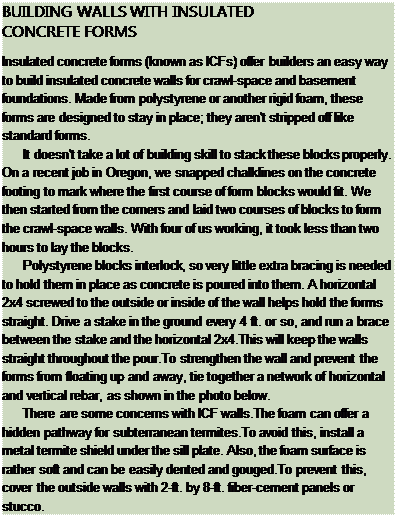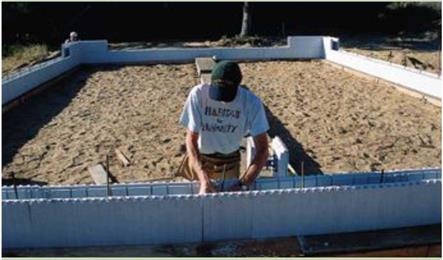STEP 3 BACKFILL AROUND THE FOUNDATION


The foundation is ready for the floor framing work to begin. But the job site isn’t. Backfilling against the walls restores at least some of the site’s original contour, making it safer and easier to move around. If you’re building a house with a full basement, the backfilling process is usually delayed until after the first floor is framed and sheathed. Because they are taller, basement walls need the extra rigidity provided by the floor framing to ensure that backfilling doesn’t damage the foundation. This isn’t a major concern with crawl-space walls, so it’s good to backfill now. But first, it’s important to take care of the following details.
In areas where termite infestation is possible, some builders elect to call in a licensed pest – control contractor to apply pesticide around the base of the foundation before backfilling against the walls. However, if you don’t like the idea of putting chemicals in the soil, there are other termite control options to consider (see the sidebar on p. 60).
It’s important to keep moisture out of the basement or crawl-space area, as well as out of the masonry wall itself. Foundation coatings help accomplish this. Concrete block walls are often parged—covered with a layer of mortar that conceals and protects the joints between the blocks. A waterproof coating should also be applied. Asphalt-type coatings are popular because they are inexpensive and have been used for many years. More effective and more expensive coatings are also available and should be considered when you’re building in soil that stays wet for extended periods of time. No matter how good a waterproof coating is supposed to be, it shouldn’t be your only line of defense against under-house moisture (see the sidebar at left).






Leave a reply